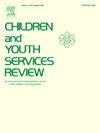情绪虐待和情绪忽视对中国青少年攻击行为的影响有何不同?相对剥夺的纵向中介作用
IF 1.7
2区 社会学
Q1 FAMILY STUDIES
引用次数: 0
摘要
虐待对青少年攻击性的影响是公认的,然而,计算不同类型虐待的总分可能会模糊这些类型的独特作用。很少有研究强调情绪虐待对青少年攻击行为的影响,关注情绪虐待亚型(情绪虐待和情绪忽视)之间差异的研究就更少了。由于侵略具有多个维度,仅考察整体侵略可能会限制我们的理解。目的构建两个模型,探讨情绪虐待和情绪忽视对青少年攻击行为及其子维度的影响。考察了相对剥夺的纵向中介作用。方法与参与者采用纵向调查方法收集两所中学1244名青少年(M = 14.00, SD = 1.48,男性49.8%)的资料。参与者在三个时间点完成了情绪虐待、情绪忽视、相对剥夺和攻击的测量。结果在控制了T1的年龄、性别、相对剥夺和攻击因素后,结果表明情绪虐待T1直接预测攻击T3及其子维度(身体攻击、言语攻击、愤怒、敌意、自我攻击),并通过相对剥夺T2间接预测攻击T3及其子维度。情绪忽视T1不影响攻击T3及其子维度(自我攻击除外)。结论情绪虐待对青少年攻击行为有长期影响。相对剥夺是情绪虐待和攻击之间的潜在机制。情绪虐待对攻击性的影响大于情绪忽视,而情绪忽视主要诱发自我攻击。本文章由计算机程序翻译,如有差异,请以英文原文为准。
How do emotional abuse and emotional neglect differ in their influences on aggression in Chinese adolescents? The longitudinal mediation of relative deprivation
Background
The impact of maltreatment on adolescent aggression is well recognized, however, calculating total scores for different types of maltreatment may obscure the unique role of these types. Few studies have emphasized the impact of emotional maltreatment on adolescent aggression, and even fewer have focused on the differences between subtypes of emotional maltreatment (emotional abuse and emotional neglect). As aggression has multiple dimensions, examining only overall aggression may limit our understanding.
Objectives
This study constructed two models to investigate the impact of emotional abuse and emotional neglect on aggression and its sub-dimensions in adolescents. The longitudinal mediation of relative deprivation was examined.
Methods and Participants
Data from 1244 adolescents (M = 14.00, SD = 1.48, 49.8 % males) in two middle schools were collected via a longitudinal survey. Participants completed measurements of emotional abuse, emotional neglect, relative deprivation, and aggression at three time points.
Results
After controlling for age, gender, relative deprivation and aggression at T1, the results showed that emotional abuse T1 directly predicted aggression T3 and its sub-dimensions (physical aggression, verbal aggression, anger, hostility, self-aggression), and indirectly predicted aggression T3 and its sub-dimensions through relative deprivation T2. Emotional neglect T1 can’t influence aggression T3 and its sub-dimensions (except for self-aggression).
Conclusions
Emotional abuse has long-term effects on adolescents’ aggression. Relative deprivation is a potential mechanism between emotional abuse and aggression. Emotional abuse had a broader impact on aggression than emotional neglect, while emotional neglect primarily induces self-aggression.
求助全文
通过发布文献求助,成功后即可免费获取论文全文。
去求助
来源期刊

Children and Youth Services Review
Multiple-
CiteScore
6.30
自引率
6.10%
发文量
303
期刊介绍:
Children and Youth Services Review is an interdisciplinary forum for critical scholarship regarding service programs for children and youth. The journal will publish full-length articles, current research and policy notes, and book reviews.
 求助内容:
求助内容: 应助结果提醒方式:
应助结果提醒方式:


